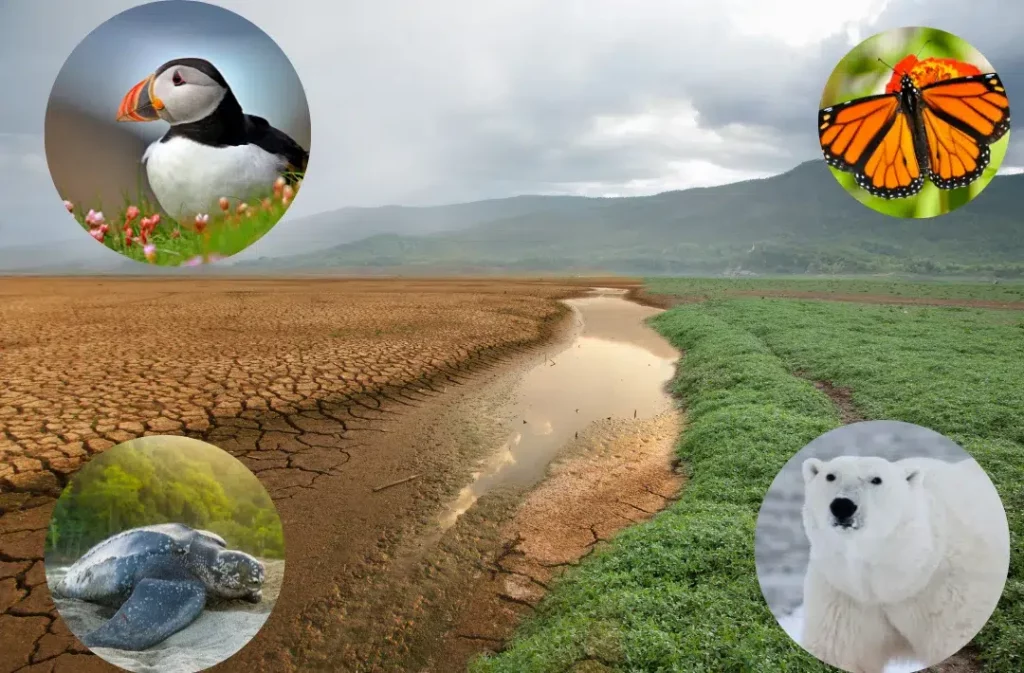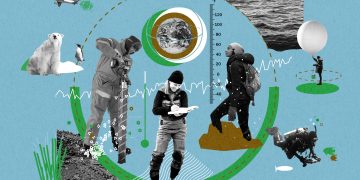1. Understanding the Science of Climate Change
Climate change refers to the long-term alteration of temperature and typical weather patterns in a place, largely driven by the accumulation of greenhouse gases (GHGs) such as carbon dioxide (CO₂), methane (CH₄), and nitrous oxide (N₂O) in the atmosphere. According to the Intergovernmental Panel on Climate Change (IPCC), human activities—particularly the burning of fossil fuels and deforestation—are the dominant cause of observed warming since the mid-20th century.
1.1 The Greenhouse Effect
The greenhouse effect is a natural phenomenon that keeps the Earth’s surface warm enough to sustain life. However, excessive emissions from industrial activity and land-use change have amplified this effect, trapping more heat and leading to a global average temperature increase of approximately 1.1°C above pre-industrial levels.
1.2 Feedback Loops
Positive feedback mechanisms—such as the loss of Arctic sea ice (which reduces the Earth’s albedo), the thawing of permafrost releasing methane, and the drying of tropical forests—exacerbate warming. These feedbacks create non-linear responses in the climate system, heightening the urgency for mitigation.
1.3 Tipping Points
Climate scientists warn of potential tipping points, such as the collapse of the Greenland and West Antarctic ice sheets or the disruption of the Atlantic Meridional Overturning Circulation (AMOC). Crossing these thresholds could trigger irreversible changes, with profound consequences for global sea levels, ecosystems, and human societies.
2. The Global Impact of Climate Change
Climate change is not merely an environmental problem; it is an all-encompassing challenge affecting economies, health, security, and development.
2.1 Extreme Weather Events
Rising global temperatures intensify hurricanes, heatwaves, floods, and droughts. For example, the 2021 European floods caused over €30 billion in damages, while severe heatwaves in South Asia have pushed human survivability to dangerous limits.
2.2 Sea-Level Rise
Thermal expansion of seawater and melting glaciers have led to a global sea-level rise of about 20 centimeters since 1900. Low-lying island nations like the Maldives face existential threats, and major cities such as New York, Jakarta, and Mumbai are investing heavily in coastal defenses.
2.3 Ecosystem Disruption
Species migration, coral bleaching, and the loss of biodiversity are among the ecological impacts. Entire ecosystems, such as the Amazon rainforest and Arctic tundra, face potential collapse, which would further amplify climate risks.
2.4 Human Health
Changing climates contribute to the spread of vector-borne diseases (like malaria and dengue), respiratory illnesses due to air pollution, and heat-related mortality. According to the World Health Organization (WHO), climate change could cause an additional 250,000 deaths annually between 2030 and 2050.
2.5 Economic Consequences
Climate-related disasters cost the global economy an estimated $300–400 billion annually. Agriculture faces reduced yields due to droughts and shifting rainfall patterns, while insurance markets struggle to price risks in increasingly volatile environments.
3. Climate Change and Global Inequality
Climate change is a deeply unequal crisis. Vulnerable populations often contribute the least to global emissions yet suffer the most from its consequences.
- Geographical Inequality: Developing nations in Africa, South Asia, and small island states experience disproportionate impacts due to limited adaptive capacity.
- Generational Inequality: Future generations will inherit the bulk of climate-related damages despite having contributed little to the problem.
- Socioeconomic Inequality: Low-income communities often reside in areas more prone to flooding or extreme heat and have fewer resources to recover from disasters.
This inequality has become a focal point in global climate negotiations, shaping debates about climate finance, adaptation funds, and loss-and-damage compensation.
4. International Policy Responses
4.1 The Paris Agreement
Adopted in 2015, the Paris Agreement aims to limit global warming to well below 2°C, preferably to 1.5°C, above pre-industrial levels. Nearly every nation has pledged Nationally Determined Contributions (NDCs), though collective ambition remains insufficient to meet the 1.5°C goal.
4.2 Climate Finance
Developed countries have committed to mobilizing $100 billion annually to support mitigation and adaptation in developing nations. However, actual disbursement has often fallen short, eroding trust between global North and South.
4.3 Carbon Pricing
Over 60 jurisdictions have implemented some form of carbon pricing—either carbon taxes or cap-and-trade systems—creating economic incentives for emissions reductions. While effective in theory, uneven pricing levels and loopholes limit their global impact.
4.4 Technology Transfer
Policies encouraging the diffusion of clean technologies—such as solar panels, electric vehicles, and carbon capture—are essential for enabling low-carbon transitions in emerging economies.

5. Technological Pathways to Mitigation
5.1 Renewable Energy Transition
The rapid expansion of solar, wind, and hydroelectric power is crucial. The International Energy Agency (IEA) projects that renewables could supply nearly 70% of global electricity by 2050 under ambitious climate scenarios.
5.2 Energy Efficiency
Improving energy efficiency in buildings, industry, and transportation can reduce emissions significantly. For instance, retrofitting old infrastructure with modern insulation and smart energy systems lowers energy consumption.
5.3 Negative Emissions Technologies
Approaches such as afforestation, bioenergy with carbon capture and storage (BECCS), and direct air capture hold promise for removing CO₂ from the atmosphere. However, these technologies face challenges in scalability and cost.
5.4 Circular Economy
A shift toward circular production and consumption—emphasizing reuse, recycling, and resource efficiency—can reduce waste and emissions while fostering sustainable economic growth.
6. The Role of Society and Culture
Mitigating climate change is not only a technical challenge but also a cultural transformation.
- Behavioral Change: Encouraging sustainable lifestyles—such as plant-based diets, reduced air travel, and energy conservation—can lower individual carbon footprints.
- Youth Activism: Movements like Fridays for Future, led by Greta Thunberg, have brought unprecedented global attention to climate issues.
- Media and Communication: Transparent reporting and climate literacy campaigns help mobilize public support for bold policy action.
- Corporate Responsibility: Increasingly, businesses are adopting Environmental, Social, and Governance (ESG) standards, recognizing that long-term profitability aligns with environmental sustainability.
7. Adaptation and Resilience
Given that some degree of climate change is already unavoidable, adaptation is a critical component of the global response.
- Infrastructure Investment: Building resilient infrastructure—like seawalls, drought-resistant agriculture, and urban green spaces—reduces vulnerability to climate shocks.
- Early Warning Systems: Enhanced climate forecasting and disaster preparedness save lives and reduce economic losses.
- Community-Based Solutions: Local participation ensures that adaptation strategies reflect the needs and knowledge of those most affected.
8. Future Outlook: Pathways to a Sustainable World
The coming decades will determine whether humanity can avert the worst impacts of climate change. Key elements include:
- Stronger International Cooperation: Bridging divides between developed and developing nations over finance and technology.
- Integrated Policy Approaches: Aligning climate policy with economic development, energy security, and social justice.
- Innovation and Investment: Mobilizing private capital for green technologies and resilient infrastructure.
- Ethical Leadership: Recognizing climate change as a moral issue demanding fairness, intergenerational responsibility, and global solidarity.
9. Closing Reflection
Climate change is not merely a distant threat but a present reality reshaping human and ecological systems. Addressing it requires collective action across nations, industries, and communities. It demands both systemic change—such as decarbonizing economies—and individual choices that embrace sustainable living.
As we stand at a crossroads, the future will be determined by how quickly we act and how equitably we share the burdens and benefits of that action. By committing to deep decarbonization, investing in adaptation, and fostering inclusive global cooperation, humanity can transform the climate crisis into an opportunity for building a more resilient, equitable, and sustainable world.

















































